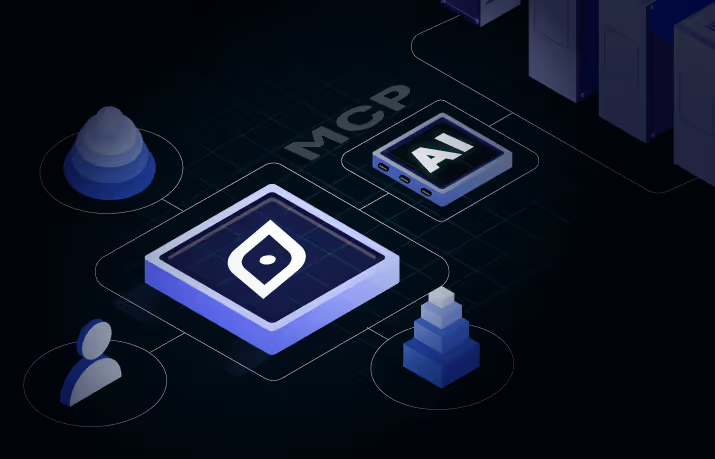Successful Recruiting: Winning the Talent War with AI Talent Acquisition
In the post-pandemic era, recruitment has become one of the most critical aspects that provide companies with a competitive advantage. While recruitment has always been an important factor, the talent migration trends, the shifting of the talent equation, and the growing supply-demand gap have made it an absolutely critical element to keep the enterprise running smoothly.
Technology companies are now at the forefront of using everything they can to squeeze maximum potential out of a dwindling talent pool. Many are turning to AI talent acquisition tools to enhance efficiency and reach. On average, these companies employ 1.15 talent acquisition employees per 100 full-time employees, a much larger percentage than the traditional figure of 0.7 per 100. AI Talent acquisition teams at technology companies are growing at a rate of 21.4%, an unusual yet unsurprising figure.
Other ways companies are employing to lure talent include:
- High Compensation: Some leading technology companies are paying as much as 150% higher base salaries to their AI talent acquisition workforce.
- Technical Training Program: Technology companies provide basic technical training to their AI talent acquisition teams to better prepare them for hiring technical talent.
- New-Age Workloads and Responsibilities: Technology companies are advancing AI talent acquisition to find candidates with digital skills such as design, digital marketing, employer branding, and agile methodologies.
However, in an age where the tech talent gap is at an alarming 4.47 million (and growing) and companies take over 50 days to fill a position, AI talent acquisition can do more to assist your hiring teams.
This is where market intelligence from key players can help you.
Leverage Market Intelligence for Smarter AI Talent Acquisition
When unsure about the best recruitment strategy for your company, the smartest move is to leverage insights from current market intelligence and AI talent acquisition tools. Understand what your peers are doing and do it better… or don’t do it at all.
Below, we’ve covered a few of these insights gathered from Draup’s market intelligence study.
Leverage adjacent skillsets to hire for your target role
The base pay for Software Development Engineer talent in the Bay Area is $118,000. However, trying to recruit with this figure in mind will only open your organization to about 50% of the available talent pool.
Draup’s research estimates that you must offer between 1.23X–1.44X of base pay to unlock access to 75–90% of the talent pool at a tech talent hotspot in the US.
AI talent acquisition platforms can help you use this data to prepare better job descriptions that attract the right kind of talent. But there’s more to it than that—you can also identify adjacent skills where base pay is lower and use reskilling to bridge the gap.
For example, with a $100,000 budget, Data Analyst roles in Greater Boston are more accessible and can be reskilled into Data Scientists.

Such insights could not only open access to a wider talent pool – the pool for Data Analysts is larger than Data Scientists—but could save you AI talent acquisition costs.
Understand what your peers are known for
Competitor analysis is critical for the success of your talent recruitment efforts as well.
Knowing how your peers are attracting talent is crucial to benchmark your own AI talent acquisition process.
A top-tier tech company, or a FAANG for that matter, might be recruiting candidates through coding boot camps, multiple interview rounds etc. The point is that they are not exactly transparent in their process.
Establishing the transparency of your recruitment process right off the bat is an excellent way to attract tech talent that is spoiled for choices in the current market.
Capitalize on Tech Talent Migration
As the tech talent continues to spread to newer locations, now is the time to expand your AI talent acquisition wings to cover Tier 2 and Tier 3 cities.
Middle America has been a huge winner during the pandemic, where tech talent from hotspots migrated back to. In turn, this is also a boon for the local economy.
By keeping track of where this talent is migrating to, and concentrating your hiring efforts in these locations will help your recruitment team in the long run when remote work eventually becomes a standard.
Understand How AI Talent Acquisition Can Support Hiring for Diversity.
The time has come for companies to move away from role-based sourcing and embrace skills-based sourcing.
This is especially useful when it comes to hiring a diverse talent pool.
In other words, companies looking for a Python programmer to work in a Data Scientist role, for example, might find that there aren’t many women candidates in the location’s talent pool. But there are many in the talent pool for R programmers and often for much lower base pay.
Here, AI talent acquisition teams can hire women from this talent pool for R programmers and easily reskill them to take on the responsibilities of a Python programmer.
Current market intelligence data can tell us more than the above insights.
Here are six key tech hiring trends for the future:
- ~70% use third party sites such as Glassdoor and Blind during a job hunt (Stack Overflow Survey)
In the age of AI talent acquisition, candidates, especially specialized tech talent, are doing more research than ever before applying. They are highly informed about a firm’s work culture and the opportunities available across the market.
- Job Pivots across Job Families
The labor market is increasingly “malleable,” and job pivots across job families are at all-time highs and expected to increase. According to the WEF The Future of Jobs report, 72% of all job pivots to Data, and AI job families are from a different job family.
- Public Reviews and LinkedIn Connections
Candidates refer to 10+ reviews from portals such as Glassdoor and seek reviews from relevant working professionals on LinkedIn prior to accepting an offer.
- ~50% turned down job offers due to a bad recruiting experience
Job seekers in in-demand industries like technology reject job offers owing to bad experience during the hiring process such as ghosting (experienced by 61% of job seekers) and any application process that lasts longer than a month
- Working with new technologies is a job change driver for over 58%
According to Stack Overflow Developer’s Survey 2020, while better compensation is the most important factor for job change (70%); the second most important factor is ‘wanting to work with new technologies (58.5%)
- ‘Techie’ recruiters & technology adoption
Traditional enterprises lack tech-enabled human resources teams. Modern-day technical recruiters need exposure to AI talent acquisition tools for more effective hiring.
This article has been prepared based on the Thought Leadership session by Vijay Swaminathan, CEO & Co-Founder of Draup, at the virtual event on NEW IDEAS AND TACTICS FOR SUCCESSFUL DIVERSITY RECRUITING.
View the full session here.
Draup is an AI-powered talent intelligence platform leveraged by Fortune 500 enterprises to gain timely talent insights & prepare comprehensive workforce planning strategies.










.svg)
















.svg)





.svg)





.svg)
